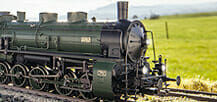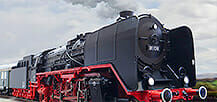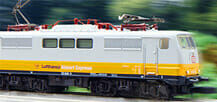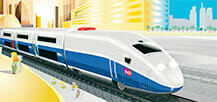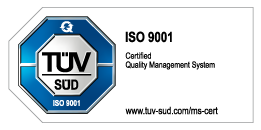Milk Car Set
When Milk Goes Traveling
Riding along in the earlier milk cars as a loadmaster could become a drafty and exhausting occupation. For in addition to the constant work with 40 liter / 10-2/3 gallon milk cans, the wide spacing between the wooden boards on the ends of the car caused the airstream to whistle through the interior of the car.
Prototype: 2 German Federal Railroad (DB) Bavarian design milk cars. Cars from the first group delivered in 1908 with a flat roof. Both cars still include DR lettering for the British-US Zone. Used in less-than-carload-lot service and for the transport of fresh milk. The cars look as they did around 1952/53.
Most Important Facts
| Article No. | 48818 |
|---|---|
| Gauge / Design type | H0 / 1:87 |
| Era | III |
| Kind | Freight Car Sets |
Highlights
- Cars used for less-than-carload-lot service and for the transport of fresh milk.
- Finely detailed construction.
- Can also be used in passenger trains.
-
Product description
Model: Each car has 6 Grove type vents on the roof. There are two steps below the sliding doors on each side. The steps on the ends of the cars are separately applied. Both cars have different car numbers. They are individually packaged and there is also a master package. Total length over the buffers 22.2 cm / 8-3/4".
DC wheelset per car E700580.Find more Märklin explanation videos on our YouTube Channel
Spare parts for our articles can be found here in our spare parts search.
-
Publications
- Fall New Items 2022 - Product programme 2022/2023 - Product programme 2023/2024
-
Prototype information
Special freight cars were purchased in Bavaria for milk traffic, above all for the transport of milk cans. The railroad transported the milk cans in this manner from Bavarian dairy farmers who brought their products by wagon or tractor to the nearest station. The railroad cars ran in scheduled passenger trains, which in the past enabled the fastest transport of the perishable milk to the dairies in the city. The light paint scheme was typical for the cars and was supposed to keep temperatures within limits in the summer. Another typical feature were the narrow, opposed sliding doors on both sides. Since the cars were not loaded by forklift or hand truck, narrow doors worked out well. A load conductor on the train, or local personnel, or even the farmer delivering the milk did the manual loading of the 40 liter / 10.5 gallon milk cans. Several load restraints inside the railroad cars served to secure the milk cans. The loading work at the short stops for the passenger trains could be taken care of relatively quickly through the two doors on both sides of the cars. In addition, the milk cans to be unloaded could be pre-sorted during the trip and be placed ready for unloading at one of the doors. Since the milk transport car was run in passenger trains as a rule, it had a Westinghouse design air brake as well as electrical and steam heating lines. This allowed passenger cars running behind the milk car to be heated too. The wooden boards on the ends of the car had slots in them to allow wind to whistle into the car's interior in order to keep the milk somewhat cool during the trip. Riding in a milk transport car thus developed into a drafty experience.
Compatible Products
Warning
ATTENTION: not for children under 15 years
